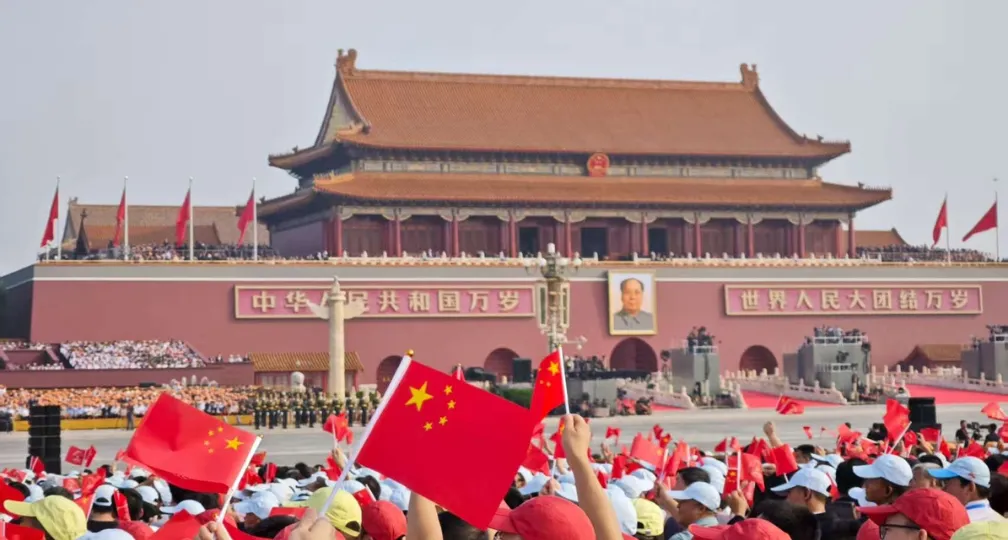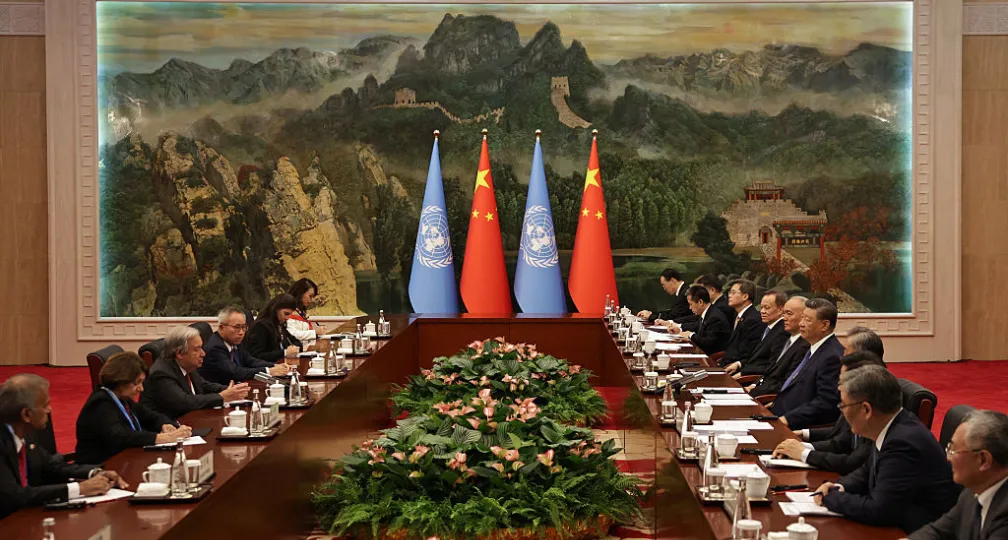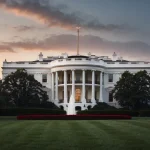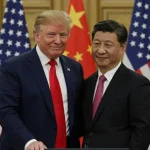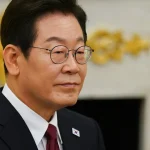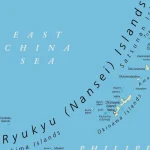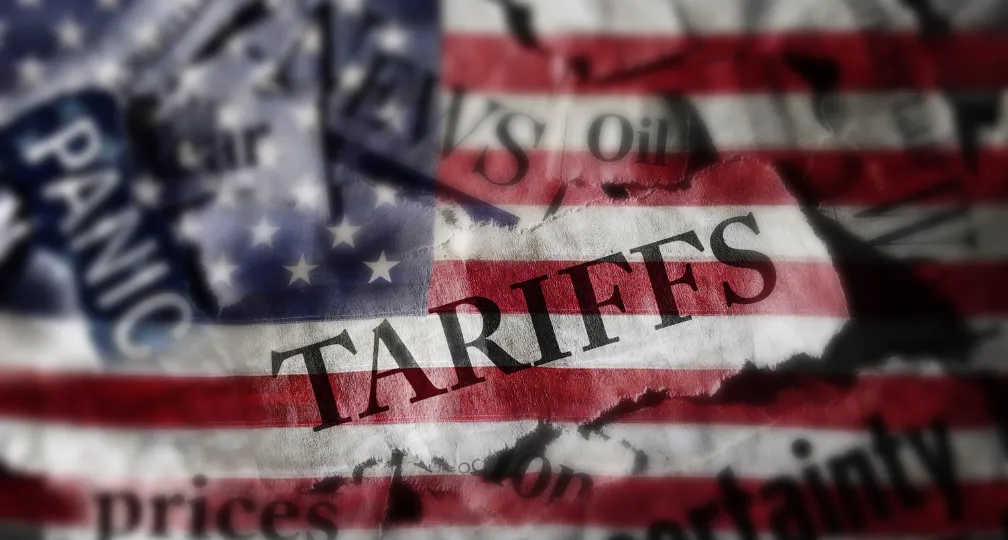US-China Misperceptions in the Race for Strategic Autonomy
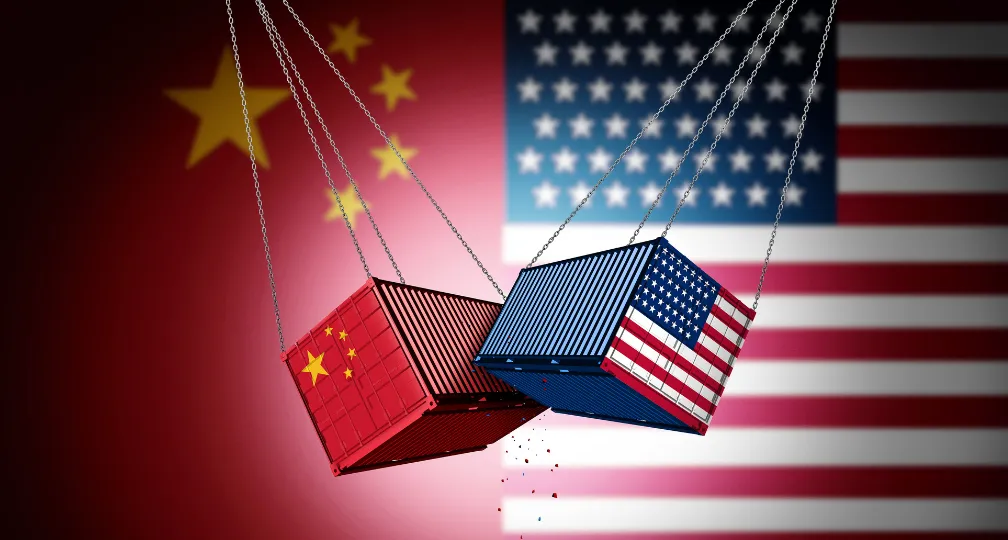
The latest regulatory developments on economic security & geoeconomics
By Paul Nadeau, Visiting Research Fellow, Institute of Geoeconomics (IOG)
U.S. Federal Government Shuts Down: The U.S. federal government shut down on October 1 after Congress was unable to reach an agreement on how to continue funding the government. There may be several impacts on U.S. international economic policy:
The Bureau of Industry & Security (BIS), responsible for export license applications, advisory opinions, and commodity classification requests covered by the Export Administration Regulations, will likely suspend regular services, such as processing for export license applications, commodity classification requests, encryption reviews and registrations, and advisory opinion requests, except in extraordinary circumstances essential to national security.
・U.S. Customs and Border Protection (CBP) will continue to collect tariff revenue and most of its other responsibilities related to economic and security operations, such as cargo inspection at ports of entry, will continue.
・The Committee on Foreign Investment in the United States (CFIUS), responsible for oversight, approval, and mitigation for Foreign Ownership Control or Influence on non-U.S. investments in U.S. businesses with certain controlled technologies, real estate, critical infrastructure, or sensitive personal information, will likely delay the formal acceptance of new filings until after the shutdown to avoid the tolling of statutory review deadlines.
・The Directorate of Defense Trade Controls in the U.S. State Department will curtail its Defense Export Control and Compliance System submissions for registrations, licenses (including batch submissions), advisory opinions, and commodity jurisdiction determinations. Requests in process at DDTC as of Sept. 30 will remain in that status.
・The Office of Foreign Assets Control (OFAC), responsible for oversight and enforcement of US sanctions and embargos, will likely prioritize sanctions enforcement activities, including administering the Specially Designated Nationals (SDN) List, issuing new sanctions designations, and handling sanctions-related inquiries on a limited basis.
・The Office of the U.S. Trade Representative will continue negotiations with foreign partners as normal but will cease include routine engagements with foreign trading partners on such initiatives as trade and investment framework agreements.
China Expands its Export Controls: China significantly expanded its export controls on October 9 and will take effect on November 8, shortly before the 90-day China-U.S. trade truce expires. The new controls cover the rare earth minerals holmium, erbium, thulium, europium and ytterbium, while foreign companies producing some of the rare earths and related magnets on the list will now need a Chinese export license if the final product contains or is made with Chinese equipment or material, and these rules will take effect on December 1. Foreign defense users will not be granted licenses and applications related to advanced semiconductors (14-nm and below) will be approved on a case-by-case basis. The new controls are seen to be an escalation in trade tensions between China and the United States and a maneuver to give China leverage in upcoming negotiations between Xi Jinping and Donald Trump.
Trump responded to China’s announcement by announcing a 100 percent tariff on China effective November 1 or possibly sooner, suggesting the possibility of tit-for-tat escalations before the November summit.
BIS Announces Interim 50 Percent Rule: The U.S. Commerce Department’s Bureau of Industry and Security (BIS) announced its interim “50 percent” rule on September 29 that will automatically subject any entity that is at least 50 percent owned by one or more parties on the Entity List or Military End-User List to the same trade restrictions as if they were on those lists. The goal of the rule is to close a loophole whereby listed entities would acquire dual-use U.S. goods via unlisted subsidies. The rule is expected to cover thousands of new entities not currently covered by existing rules and is similar to the 50 percent rule used by the U.S. Treasury Department’s Office of Foreign Assets Control (OFAC).
BIS Expands Entity List: On October 9, the U.S. Commerce Department’s Bureau of Industry & Security (BIS) added 26 entities and 3 addresses in China, Turkey, and the United Arab Emirates (UAE) to the Entity List, effective October 8. These entities are alleged to have been involved in diverting U.S.-origin commodities to Iran for use in unmanned aircraft systems (UAS)/unmanned aircraft systems (UAVs) or aircraft.
ROK, U.S. Reach Agreement on Foreign Exchange: South Korea and the United States reached an agreement on foreign exchange in an effort to establish new security swap lines as part of an agreement to reduce South Korea’s tariff from 20 percent to 15 percent. An agreement on currency exchange is seen to be essential for a cash-up-front commitment of $350 million to U.S. investment. The United States has judged that South Korea is not a currency manipulator.
U.S. Treasury Department Designates Parties Involved in Iran Tech Transfers: On October 1, the U.S. Treasury Department designated 21 entities and 17 individuals involved in networks that facilitate the acquisition of sensitive goods and technology for Iran’s Ministry of Defense and Armed Forces Logistics (MODAFL), as well as for its missile and military aircraft production efforts. Concurrently, the U.S. State Department sanctioned five individuals and one entity connected to Iran’s Organization of Defensive Innovation and Research (also known by its Persian acronym SPND), which is the direct successor to Iran’s pre-2004 nuclear weapon program.
USTR Seeks Public Comment on USMCA: The Office of the U.S. Trade Representative published a notice in the Federal Register requesting public comment on the operation of the U.S.-Mexico-Canada Agreement (USMCA) and issues that President Trump should raise with Canada and Mexico related to the agreement, along with a public hearing on November 17. USMCA is set to expire next July and USMCA-compliant goods are exempt from the tariffs Trump imposed on the two countries earlier this year.
Analysis: US-China Misperceptions in the Race for Strategic Autonomy
By Andrew Capistrano, Visiting Research Fellow, IOG
After several months of relative stability, the US-China trade conflict reignited over the weekend with a force not seen since April’s retaliatory tariff spiral. Yet what appears on the surface to be a dispute over export controls reveals something deeper about US-China relations during the “tariff pause”. On the one hand, the recent escalation appears to have resulted from misperceptions and incompatible narratives regarding the origins of the trade dispute. On the other hand, the episode confirms that the US and China are definitely moving toward strategic autonomy. Both sides are now convinced that the other poses a structural threat to their economic and technological future — and each is trying to see who can de-risk faster in the race to reduce dependencies.
On 9 October, China’s Ministry of Commerce (MOFCOM) announced sweeping new export controls on rare earths effective from 8 November. Under these regulations, any product containing more than 0.1% Chinese rare earth content would require approval before being manufactured by other countries or re-exported abroad. The measures also imposed licensing requirements for all products made with rare earth technologies of Chinese origin, even if produced overseas. And the list of targeted materials was expansive. It covered medium and heavy rare earths (such as holmium, erbium, and thulium) essential to defense and telecom platforms, synthetic diamonds used in semiconductor and optical manufacturing, and key inputs for lithium batteries and graphite anodes necessary for green technology and drone production. Exports for “military end uses” would be banned outright.
In effect, this represents China’s “critical minerals equivalent” of the US Foreign Direct Product Rule (FDPR), a mechanism Washington has used to restrict China’s access to advanced semiconductors. Beijing seems to have learned the effectiveness of deploying extraterritorial controls that can reach deep into global supply chains. But the effect of China’s rare earth measures would go beyond the US’s semiconductor restrictions, which only targeted one sector and one country. China’s export controls instead provide it with potential veto power over global industries — from chip fabs and AI data centers to EV manufacturers — where rare earth inputs are indispensable, potentially making all advanced industries dependent on the ability to receive Chinese export licenses.
President Trump responded within hours, warning on social media that the US had “many tools” in the trade war it had so far “chosen not to use”, “until NOW”. He questioned whether there was any point in meeting Xi Jinping at APEC in late October, and later threatened to impose 100% tariffs on Chinese goods from 1 November. China may not have anticipated this degree of escalation, as afterwards MOFCOM quickly tried to soften its stance by clarifying that while export applications for military end-users would not be approved, exports for R & D, logic chip production below the 14nm node, and memory chip production over the 256-layer, would be approved on a “case-by-case basis”.
To understand why China took this provocative action, and why Trump responded with retaliatory threats, it is important to consider four misperceptions and incompatible narratives that reduce the prospects for a grand US-China trade deal.
First, both the US and China are attempting to frame their measures — tariffs, export controls, or otherwise — as responses to the other side’s actions. This dynamic was visible during the initial tit-for-tat tariff spiral in April. Fundamentally, Trump sees his “reciprocal” tariffs as justified by China’s failure to honor the 2020 “Phase One” trade deal. He also believes his first-term tariffs that led to this deal were necessary due to China’s longstanding unfair trading practices, which he blames for hollowing out the US industrial base and years of persistent US trade deficits. But China portrays itself as acting defensively in response to years of US trade aggression, including Trump’s first-term tariffs and Biden’s semiconductor controls. From China’s standpoint, its trade surpluses reflect market conditions, so any action to restrict its export-oriented manufacturing growth is an attempt to stifle its economic development.
Depending on where one begins their analytic timeline, then, it is possible for both the US and China to be correct in assigning blame.
Second, and relatedly, there are two incompatible narratives over what was agreed at the US-China trade talks in Geneva, London, Stockholm, and Madrid. Both sides recognize that the Geneva agreement to suspend the retaliatory tariffs imposed in April was accompanied by a US commitment to halt any more unilateral tariff increases and a Chinese commitment to refrain from unilateral export controls on rare earths. But whereas China interpreted this as meaning no unilateral actions would be taken at all, it appears the US only committed to not unilaterally increasing tariffs during the pause.
Therefore, when the US Commerce Department’s Bureau of Industry and Security (BIS) took a series of actions beginning in September, China saw it as a violation of the Geneva understanding. BIS actions included adding 23 Chinese firms to the Entity List on 12 September, another 11 four days later, and an additional 19 on 8 October. However, perhaps the greatest perceived US escalation was BIS’s introduction of the so-called “affiliates rule” on 29 September, which extends US export controls to any subsidiaries where sanctioned firms hold 50% ownership.
In this context, MOFCOM’s clarification tried to frame China’s rare earth export controls as a “legitimate” response to these “unilateral” US moves it perceived as escalatory. The US rejects this interpretation because the BIS actions were not tariffs. Moreover, the US sees MOFCOM’s initial export control announcement without prior warning as the true provocation that broke the Geneva agreement, since apparently Treasury Secretary Scott Bessent warned Chinese negotiator He Lifeng in advance that the “affiliates rule” was coming. The irony is that both sides depict themselves as reacting defensively and the other as unilaterally escalating.
Third, there is an apparent misperception relating to the end goal of the “tariff pause” itself. Based on public statements by Bessent and US Trade Representative Jamieson Greer, the US viewed the negotiation period as an opportunity to get China to make trade concessions in exchange for removing the tariffs, but if this was not possible, the “tariff pause” would also serve as a window of opportunity for the US to de-risk its supply chains. China appears to have a different view. It saw the same pause as a prelude to a deal, perhaps a revival of the “Phase One” terms that would stabilize trade and allow Chinese exporters to regain lower-tariff access to the US market.
Bessent said back in May that the US wanted “strategic decoupling” from China, not a “general decoupling”. Since China wants to halt this process altogether, a disconnect over the desired outcome likely contributed to differing interpretations of what had been agreed during the US-China trade talks in Europe.
Fourth, the US and China also seem to have a misperception regarding the origin of the “tariff pause”, and what it revealed about the other side’s resolve. The Trump administration consistently argues that China’s export dependence and domestic deflation made it come to the bargaining table when faced with huge tariffs. Chinese state media, however, claims that Trump was spooked by the market reaction to the April tariff spiral, and therefore backed down. In reality, the tit-for-tat tariffs gave both sides an incentive to deescalate, but such a narrative is not as desirable for influencing domestic audiences.
The misperception of relative resolve reflects a dangerous dynamic in both Washington and Beijing. Some in China likely assumed Trump, eager for a political win ahead of the APEC summit, would seek an off-ramp when confronted with rare earth export controls. Instead, he treated the move as a provocation necessitating a 100% tariff in retaliation. Likewise, Trump probably thinks his tariff threat led to the MOFCOM clarification, and his follow-up posts imply he interpreted it as a sign of Chinese weakness. Bessent actually argued this week that China is facing a “recession” or “depression”, and backed down because it cannot afford a full-blown trade war. When both sides think the “balance of resolve” favors them, it can lead to miscalculations and another spiral of escalating threats.
Nevertheless, if China’s export controls were meant as leverage to stabilize talks, they backfired. The US now has greater incentive and political will to accelerate its strategic decoupling. Even if the new tariffs or export controls are never implemented, risk calculations have already changed. China’s move, intentionally or not, has validated Trump’s de-risking agenda. This in turn may make China rethink the possibility of a deal, hardening its position in future talks and increasing its determination to de-risk from the US.
In the end, the US-China trade conflict is no longer about tariffs or trade deficits, it is about strategic autonomy. Both sides are racing to reduce dependence on the other before the conflict intensifies. This is now an industrial race, not mere trade diplomacy, where the goal is to build out domestic capacity faster than the other side. The recent escalation over export controls is only one dimension of a larger question: will China be able to localize advanced chip production before the US can construct an alternative rare earth supply chain?
Last weekend’s events should mark the end of any pretense that US-China trade can return to the interdependent equilibrium of the past. Trump’s APEC meeting with Xi, if it even occurs as planned, now seems even less likely to deliver a grand breakthrough — it will only set the boundary conditions for the race to strategic autonomy. And in this race, the degree of mutual misperceptions will determine whether economic decoupling is controlled and targeted, or an unpredictable and chaotic rupture.
(Photo Credit: Shutterstock)
Disclaimer: The views expressed in this IOG Economic Intelligence Report do not necessarily reflect those of the API, the Institute of Geoeconomics (IOG) or any other organizations to which the author belongs.
API/IOG English Newsletter
Edited by Paul Nadeau, the newsletter will monthly keep up to date on geoeconomic agenda, IOG Intelligencce report, geoeconomics briefings, IOG geoeconomic insights, new publications, events, research activities, media coverage, and more.



Visiting Research Fellow
Andrew Capistrano is Director of Research at PTB Global Advisors, a Washington DC-based geopolitical risk consulting firm. Specializing in economic competition between the US/EU and China, he analyzes how trade, national security, and industrial policies impact markets, and his firm’s clients include Japanese corporations and government agencies. He previously worked in Tokyo at the US Embassy’s American Center Japan and as a research associate at the Rebuild Japan Initiative Foundation / Asia-Pacific Initiative. Dr Capistrano holds a BA from the University of California, Berkeley; an MA in political science (international relations and political economy) from Waseda University; and a PhD in international history from the London School of Economics. His academic work focuses on the diplomatic history of East Asia from the mid-19th to the mid-20th centuries, applying game-theoretic concepts to show how China's economic treaties with the foreign powers created unique bargaining dynamics and cooperation problems. During his doctoral studies he was a research student affiliate at the Suntory and Toyota International Centres for Economics and Related Disciplines (STICERD) in London.
View Profile
Visiting Research Fellow
Paul Nadeau is an adjunct assistant professor at Temple University's Japan campus, co-founder & editor of Tokyo Review, and an adjunct fellow with the Scholl Chair in International Business at the Center for Strategic and International Studies (CSIS). He was previously a private secretary with the Japanese Diet and as a member of the foreign affairs and trade staff of Senator Olympia Snowe. He holds a B.A. from the George Washington University, an M.A. in law and diplomacy from the Fletcher School at Tufts University, and a PhD from the University of Tokyo's Graduate School of Public Policy. His research focuses on the intersection of domestic and international politics, with specific focuses on political partisanship and international trade policy. His commentary has appeared on BBC News, New York Times, Nikkei Asian Review, Japan Times, and more.
View Profile-
 Is China Guardian of the ‘Postwar International Order’?2025.12.17
Is China Guardian of the ‘Postwar International Order’?2025.12.17 -
 Japan-India Defense in a Fragmenting Indo-Pacific2025.12.10
Japan-India Defense in a Fragmenting Indo-Pacific2025.12.10 -
 The “Economic Security is National Security” Strategy2025.12.09
The “Economic Security is National Security” Strategy2025.12.09 -
 India - Japan: The Glimpse of a Shared Vision2025.12.05
India - Japan: The Glimpse of a Shared Vision2025.12.05 -
 Beijing’s ‘Globalist’ Agenda Under Trump 2.02025.12.01
Beijing’s ‘Globalist’ Agenda Under Trump 2.02025.12.01
 Event Report: The Trump Tariffs and Their Impact on the Japanese Economy2025.11.25
Event Report: The Trump Tariffs and Their Impact on the Japanese Economy2025.11.25 The “Economic Security is National Security” Strategy2025.12.09
The “Economic Security is National Security” Strategy2025.12.09 The Real Significance of Trump’s Asia Trip2025.11.14
The Real Significance of Trump’s Asia Trip2025.11.14 The long road to a South Korea-U.S. trade deal2025.11.26
The long road to a South Korea-U.S. trade deal2025.11.26 The Tyranny of Geography: Okinawa in the era of great power competition2024.02.09
The Tyranny of Geography: Okinawa in the era of great power competition2024.02.09


